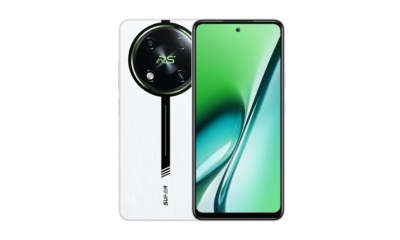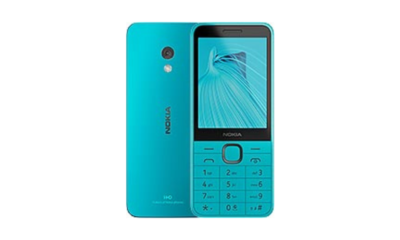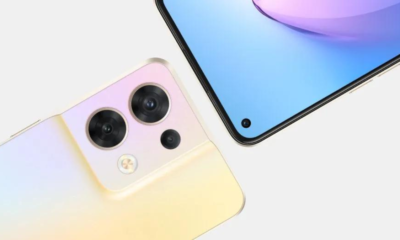Reviews
OnePlus Open Review

OnePlus released its first foldable phone( OnePlus Open) on the 26th of October. The Open has a regular-looking exterior, but upon opening it reveals a vast and vibrant folding screen.
OnePlus’s premiere foldable device is the Open, a device which is trying to compete with the likes of Samsung and Google by providing an alternate form of the tablet-phone combination that could potentially be the most effective configuration yet.
It has been five years since the arrival of the first folding tablet-phone hybrid and the form of these cutting-edge devices is still evolving. The Open has the most phone-like design when closed, with a 6.31-inch outside screen of a regular flat phone size and shape. In addition, it is only 3mm thicker than a regular OnePlus, making it not overly bulky and less curved than the Samsung or Google’s models. The large camera lump, which takes up nearly half of the back glass when folding, stands out.

The OnePlus Open has a large camera circle at its rear which allows for a secure grip when it is closed. This ensures that your finger has something to hold onto when the device is shut.
Unfold the phone to expose the almost-square 7.82in interior display that works great for apps, yet isn’t ideal for widescreen movies. It is as good as any Samsung device with its vivid, luminous, and fluid 120Hz refresh rate. Plus, the crease in the center is less perceivable than the creases of its competitors. You can still feel a slight dip if you run your finger over it and see it in the glare of bright lights if you go searching for it, but apart from that, it is not noticeable.
The hinge’s slim design allows it to open easily and hold the screen open at a variety of angles, while the two halves come together tightly with no separation when shut. OnePlus Open is only splash-proof and has no formal dust-proofing, so if it is dropped into water, it could cause issues.
The display of this folder-style device is comprised of ultra-thin glass and plastic, allowing it to be collapsible. It must be handled carefully, as it is quite easy to leave a mark on it if pressed with a fingernail. Therefore, it needs to be given more attention than a classic phone. When the device is opened up completely, the crease in the centre of the foldable display is barely visible.
Features
The following are the specific features of the product.
- Main display: A 7.82 inch Amoled screen that is flexible and offers a 2K resolution of 426 pixels per inch with a refresh rate of 120Hz
- Display: 6.31in 2K resolution (431ppi) 120Hz Amoled
- CPU: Qualcomm Snapdragon 8 Gen 2
- Amount of RAM: 16GB
- Storage Capacity: Half a Terabyte
- OS: OxygenOS 13.2 (based on Android 13)
- The main camera has 48MP, while the ultrawide is also 48MP; a 3x telephoto with 64MP and both a 32MP and 20MP for selfies.
- Networking Capabilities: 5G support, double SIM card, esim, USB-C, wifi 7, Near Field Communication, Bluetooth 5.3, and GNSS (Global Navigation Satellite System)
- Resistance to water: Rated IPX4 (resistant to splashing)
- Size when compressed: 153.4mm in length, 73.3mm in width and 11.9mm in depth.
- Size of the device revealed: 5.8mm thickness with 153.4mm in length and 143.1mm in width.
- Weight: 239g
High speed processor and extended battery life
The OnePlus Open comes with a USB-C port and, when using the included power adaptor, can be fully charged in 40 minutes or so. However, it does not have the capability to use wireless charging.

The OnePlus open has Qualcomm’s Snapdragon 8 Gen 2 chip and 16GB of RAM comparable to a laptop. This allows users to do practically anything they want on a phone or tablet with the device, without experiencing any lag. Furthermore, its battery life is impressive at around 46 hours between charges, on par with the top regular phones.

OxygenOS 13.2 and its New Feature “Canvas”
The canvas system permits Chrome to occupy the majority of the display, displacing the Premier League and Calculator applications either to the left of the screen (left) or the top of the screen (right).
The OnePlus Open has its own version of Android 13, OxygenOS, similar to other OnePlus phones. It has a distinct multitasking system that differs from other makers when it comes to accessing multiple apps at the same time.
The “canvas” of apps can expand beyond the physical edges of the display when being used in combination with one another, meaning they will not have to be compressed into thin or wide views. When a single app is being used, the other can be pushed nearly out of sight. However, it can be recalled to view again with a simple tap.
This resolution provides a graceful resolution to the issue of programs that may not function optimally when their window sizes are changed. It offers an expanded view of each app whilst still being able to access three or more simultaneously. Additionally, a taskbar at the bottom of the screen allows users to quickly add or switch between multiple apps.
The phone-sized home screen, occupying two pages, is combined into a single page for the tablet-sized home screen. The majority of the other programs do not have the same level of features as Samsung’s with regards to managing the dual screens of a folding device. For instance, with Google’s way, the home display is shared between the external and inner displays, instead of having the option of distinct designs on each screen that Samsung offers.
Swiping up on the cover screen is a great feature that allows users to keep using apps from the inside screen on the outside when they close it. However, it would be even better to have the option to always keep a few apps open, such as Google Maps, when the phone is shut. Unfortunately, OnePlus does not have a similar feature to Samsung’s “Flex mode” or “Dex” mode for desktop computing when it is connected to an external monitor.
The Open’s software has more features than Google’s Fold and boasts a great canvas system for multitasking, though it doesn’t have as much power as Samsung’s implementation.
OnePlus’s commitment to Android and security updates falls behind competitors like Google, who offer seven years, and Fairphone’s ten-year guarantee.
The Camera

The Open has a rather large camera protrusion on the rear that is equipped with a 48MP primary, a 48MP ultra-wide and a 64MP telephoto camera with a 3x optical zoom capability. The telephoto lens has the capability to zoom in on the centre of the sensor, much like the latest Google and Apple phones, to offer an additional 6x magnification.
Without doubt, the OnePlus Open boasts the best camera the company has released to date, giving the camera market leader Pixel Fold a challenge in comparison. The main camera captures a good amount of detail and handles different lighting with ease, while the ultrawide is solid and the telephoto captures good images at 3x in most light and 6x in bright light. Digital zoom is also available.
When it comes to capturing motion, all the cameras don’t do the best job, particularly when the lighting is not sufficient, which can lead to photos that lack clarity if one is not careful. Videography is satisfactory, but not the greatest.
The selfie camera on the cover screen is adequate, while the internal screen selfie camera works well for video chats. However, you can achieve much better results with the primary camera utilising the viewfinder on the cover screen to take selfies.

Final Verdict
The OnePlus Open combines aspects of the folding phones from Samsung and Google, providing a more compact size when closed and an expansive square display when unfolded.
Due to its lightweight and less cumbersome design, it is great for activities involving phones. Additionally, it has some creative ideas for multitasking on the large internal display. Nevertheless, it does not have some of the features of its top competitors, making its software capabilities somewhat weaker.
Outstanding performance and battery life, combined with the least visible fold crease of any internal screen, make the Open a remarkably mature device. Its camera is also impressive, providing stiff competition for Google. This is no surprise, given that its parent company, Oppo, has released two folders before this, making the Open their third-generation product.
When it comes to durability, foldables always bring up worries; and unfortunately, the Open is not waterproof and OnePlus does not have a good track record when it comes to new technology or fixing it. Furthermore, long-term software support is notably missing, especially for a product of this cost.
Advantages: Combines the functions of a phone and tablet; resembles a regular phone when folded; smooth transition between open and closed; offers top performance; features a great battery lifespan; has an amazing camera; unique software features.
Disadvantages: Splash-proof only; quite pricey; more easily broken than a normal phone and repair costs are high; software isn’t as good as the top competition; only five years of updates from launch.
Reviews
Xiaomi Redmi Note 13R Specifications

The Xiaomi Redmi Note 13R was officially announced on May 17, 2024, and has been available for purchase since the same day.
Design and Build
The Redmi Note 13R features a sleek design with dimensions of 168.6 x 76.3 x 8.2 mm and a weight of 205 grams. It boasts a glass front, a plastic frame, and a glass back, providing a premium feel while maintaining durability. The device supports dual Nano-SIM cards with dual standby and is rated IP53 for dust and splash resistance.
Display
Equipped with a 6.79-inch IPS LCD screen, the Redmi Note 13R offers a high refresh rate of 120Hz and a brightness of 550 nits. The display resolution is 1080 x 2460 pixels, resulting in a sharp density of approximately 396 ppi and an impressive screen-to-body ratio of around 85.1%.
Performance
Running on Android 14 with Xiaomi’s HyperOS overlay, the Redmi Note 13R is powered by the Qualcomm SM4450 Snapdragon 4+ Gen 2 chipset built on a 4 nm process. Its octa-core CPU consists of 2×2.3 GHz Cortex-A78 cores and 6×1.95 GHz Cortex-A55 cores, paired with an Adreno 613 GPU for smooth graphics performance.
Memory and Storage
The smartphone offers multiple memory configurations:
– 128GB storage with 6GB or 8GB RAM
– 256GB storage with 8GB or 12GB RAM
– 512GB storage with 12GB RAM
All variants use UFS 2.2 technology for faster data access and storage efficiency. Note that there is no memory card slot available for expandable storage.
Camera System
The dual-camera setup on the rear includes:
– A 50 MP main sensor with an f/1.8 aperture, PDAF, and a pixel size of 0.64µm
– A 2 MP macro sensor with an f/2.4 aperture
This setup is complemented by features such as LED flash and HDR, and can record videos at 1080p@30fps. The front camera houses an 8 MP wide sensor capable of the same video recording quality.
Audio
For audio enthusiasts, the Redmi Note 13R includes a loudspeaker, a 3.5mm headphone jack, and supports 24-bit/192kHz Hi-Res audio.
Connectivity
The device supports a range of connectivity options, including:
– Wi-Fi 802.11 a/b/g/n/ac (dual-band)
– Bluetooth 5.3 with A2DP and LE
– GPS, GLONASS, GALILEO, and BDS for positioning
– NFC for contactless payments
– An infrared port for remote control functions
The device features a USB Type-C port for charging and data transfer.
Additional Features
The Redmi Note 13R includes several sensors, such as a side-mounted fingerprint sensor, an accelerometer, and a compass, along with virtual proximity sensing for enhanced user interaction.
Battery and Charging
The phone is equipped with a non-removable 5030 mAh battery, supporting 33W wired charging, ensuring long-lasting usage and quick recharge times.
Colors and Pricing
The Xiaomi Redmi Note 13R is available in three colors: Black, Blue, and Silver. It is priced at approximately 180 EUR, making it a competitive option in its segment.
In summary, the Xiaomi Redmi Note 13R combines robust performance, a versatile camera system, and a high-refresh-rate display, all within a budget-friendly package.
Reviews
OPPO Reno 12 Series: Design, Launch Date and Specifications

OPPO has officially unveiled the front image rendering of its highly anticipated Reno 12 series of smartphones. This new series is set to introduce a fresh wave of innovation and design to the market. According to OPPO, the Reno 12 series incorporates a built-in anti-accidental touch algorithm designed to prevent unintended screen interactions. Additionally, the company has optimized the device’s ergonomics, ensuring it “feels good when held horizontally or vertically.” The official launch date for the Reno 12 series is set for May 23rd.
Design and Display
The Reno 12 series features a distinctive “four-curve soft-edge straight screen” design, akin to the “equal-depth slightly curved screen” concept. The screen curves gently on all four sides, giving it a straight-screen appearance from the front. This design not only enhances the phone’s aesthetic appeal but also improves grip comfort and usability. Available in two colors—silver and purple—the Reno 12 series exudes sophistication and elegance. The metallic purple variant, in particular, offers a smooth, gemstone-like feel under a glossy glass finish.
The Reno 12 Pro model boasts a 6.7-inch 1.5K 120Hz equal-depth quad-curved screen. This model is expected to feature a curved glass back and an IP65 rating for dust and water resistance. OPPO’s innovative system-level technology enhances the phone’s fluency and stability, promising a smooth user experience even after 48 months of use. The device’s 3D curved design ensures that both the screen and back cover fit comfortably in hand, providing an exceptional feel.
Performance and Cameras
The Reno 12 series includes the standard Reno 12, equipped with a MediaTek Dimensity 8250 processor, and the Reno 12 Pro, which features the more advanced Dimensity 9200 + Starspeed processor. These processors ensure fast performance, efficient battery life, and seamless multitasking capabilities.
The Reno 12 Pro’s camera setup includes a 50-megapixel JN5 front camera, a 50-megapixel IMX890 main camera, an 8-megapixel ultra-wide-angle lens, and a 50-megapixel JN5 2x telephoto lens. This quad-camera configuration is designed to capture high-quality images and videos, making it an attractive option for photography enthusiasts.
Battery and Charging
The Reno 12 series is powered by a large 5000mAh battery, providing all-day battery life. The series also supports 80W fast charging, allowing users to quickly recharge their devices. This feature is particularly beneficial for heavy users who need to keep their phones charged throughout the day.
Special Features
A standout feature of the Reno 12 series is its support for the Live Photo function on the Android platform. This feature addresses common issues with live photos on Android, offering a more seamless and enjoyable photography experience. The series also supports wireless Bluetooth calls, enabling users to make hands-free calls with ease.
The OPPO Reno 12 series marks a significant upgrade from its predecessors, offering a unique design, powerful performance, and advanced camera capabilities. The “four-curve soft-edge straight screen” design is likely to appeal to users who value both aesthetics and functionality. Additional features like the Live Photo function and wireless Bluetooth calls enhance the phone’s overall appeal, making it a compelling choice for those seeking a feature-rich smartphone. As the launch date approaches, tech enthusiasts and consumers are eagerly awaiting the opportunity to experience the Reno 12 series firsthand.
Reviews
Sony Xperia 1 VI Set for Unveiling With a Remarkable Camera

Sony’s latest flagship smartphone, the Sony Xperia 1 VI, has made its grand entrance, boasting a plethora of features tailored to cater to photographers and audiophiles alike. Released on May 15, 2024, the Xperia 1 VI promises to deliver an exceptional user experience, blending cutting-edge technology with Sony’s renowned craftsmanship.
Design and Display
Crafted with a sleek glass back adorned with a “textural rear panel finish” for enhanced grip, the Xperia 1 VI exudes elegance and functionality. Available in three sophisticated shades – Khaki Green, Platinum Silver, and Black – the device features a durable metal frame and a dedicated shutter key, catering to photography enthusiasts. Moreover, with dimensions of 162 x 74 x 8.2mm and weighing just 192g, the Xperia 1 VI strikes a perfect balance between portability and comfort.
Protected by Gorilla Glass Victus 2 on the front and Gorilla Glass Victus on the back, the device ensures robust durability and resistance to scratches. Its 6.5-inch OLED display, boasting a 19.5:9 aspect ratio, captivates users with vibrant visuals and immersive viewing experiences. Despite a downgrade in resolution to FHD+ (1080 x 2340), the Xperia 1 VI’s screen offers improved brightness and features AI-driven enhancements for optimal contrast, color, and clarity. Additionally, its variable refresh rate, ranging from 1Hz to 120Hz, guarantees seamless performance across various applications and activities.
Camera and Battery
The highlight of the Xperia 1 VI lies in its remarkable camera capabilities, particularly its 12MP telephoto lens, enabling users to zoom from 85mm to 170mm for unparalleled versatility. Complemented by a 48MP main sensor, a 12MP ultra-wide lens, and a 12MP front-facing camera, the device excels in capturing stunning photographs and videos in any setting. Equipped with AI-driven autofocus and image processing technologies, the Xperia 1 VI ensures superior image quality and precision, making every shot a masterpiece.
In terms of battery life, the Xperia 1 VI impresses with its 5,000mAh battery, delivering up to two days of usage under typical conditions and up to 36 hours of continuous video playback. Enhanced by Xperia Adaptive Charging technology, the device prolongs battery lifespan while supporting wireless charging and reverse wireless charging functionalities, ensuring uninterrupted usage throughout the day.
Specs and Features
Powered by a Snapdragon 8 Gen 3 chipset, coupled with 12GB of RAM and 256GB of storage, the Xperia 1 VI promises blazing-fast performance and ample storage for multitasking and multimedia consumption. Running on Android 14, the device guarantees seamless navigation and access to the latest features and updates.
Boasting a microSD card slot, a rarity among high-end handsets, the Xperia 1 VI offers expandable storage options for added convenience. Furthermore, with a commitment to three years of Android updates and four years of security patches, Sony ensures long-term reliability and security for its users.
Beyond its impressive hardware specifications, the Xperia 1 VI incorporates a host of software features tailored to enhance user experience. From an FPS optimizer for optimized gaming performance to advanced audio technologies such as High-Resolution Audio and LDAC support, the device caters to the diverse needs of modern consumers. Additionally, with its Music Pro feature leveraging AI to deliver studio-quality sound, the Xperia 1 VI redefines the audio experience on a smartphone.
In conclusion, the Sony Xperia 1 VI emerges as a powerhouse of innovation, combining cutting-edge technology with premium design aesthetics to deliver an unparalleled smartphone experience. With its focus on photography, audio excellence, and overall performance, the Xperia 1 VI stands poised to captivate users and elevate the standards of flagship smartphones in 2024 and beyond.
-

 Tech News7 days ago
Tech News7 days agoOnePlus 13 and 13R Potential Designs Unveiled
-

 Tech News3 days ago
Tech News3 days agoAndroid to Introduce Theft Detection Lock: Detecting When Your Phone is Snatched
-

 Tech News6 days ago
Tech News6 days agoSony Xperia 1 VI Camera Sensors Revealed
-

 Tech News7 days ago
Tech News7 days agoApple Nearing Deal with OpenAI to Integrate Generative AI Features into iOS 18
-

 Reviews4 days ago
Reviews4 days agoSony Xperia 1 VI Set for Unveiling With a Remarkable Camera
-

 Tech News6 days ago
Tech News6 days agoGoogle Pixel 9 Series to Introduce Four Distinct Models
-

 Reviews2 days ago
Reviews2 days agoXiaomi Redmi Note 13R Specifications
-

 Reviews3 days ago
Reviews3 days agoOPPO Reno 12 Series: Design, Launch Date and Specifications










